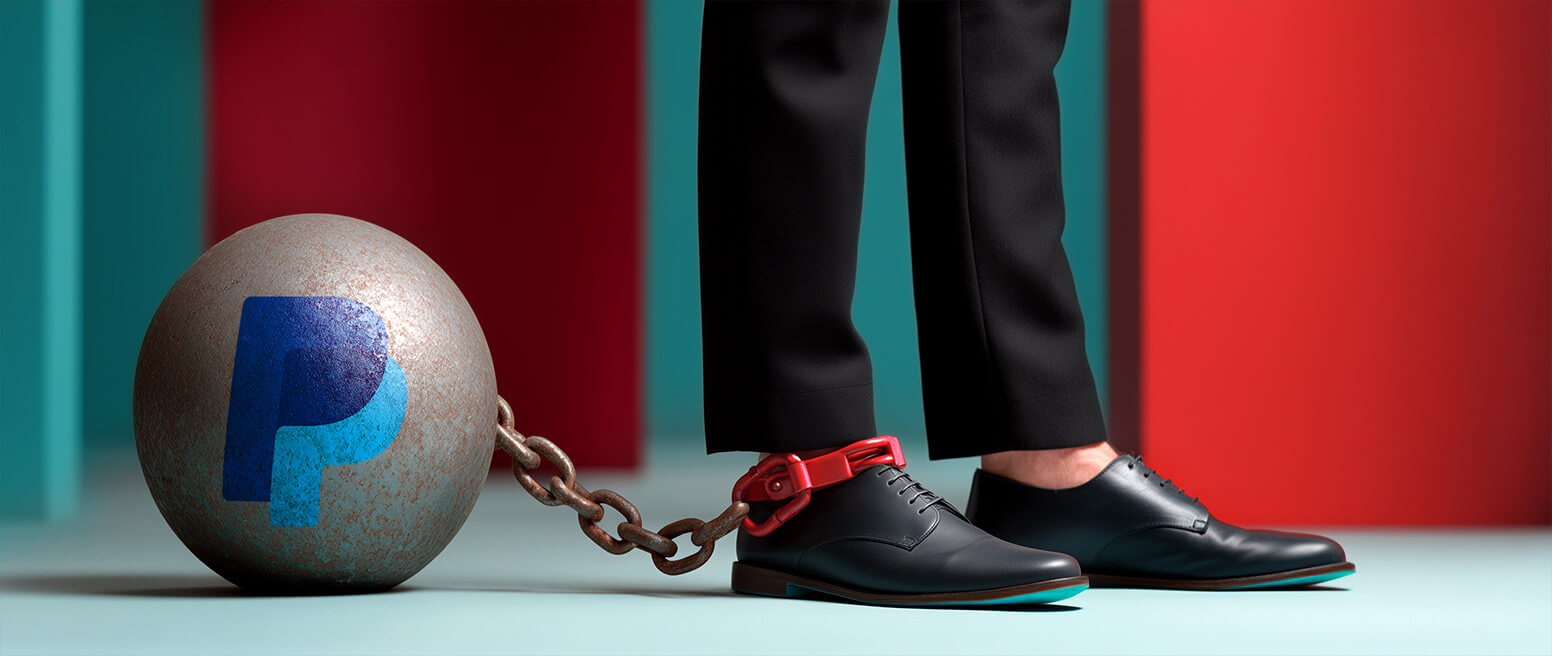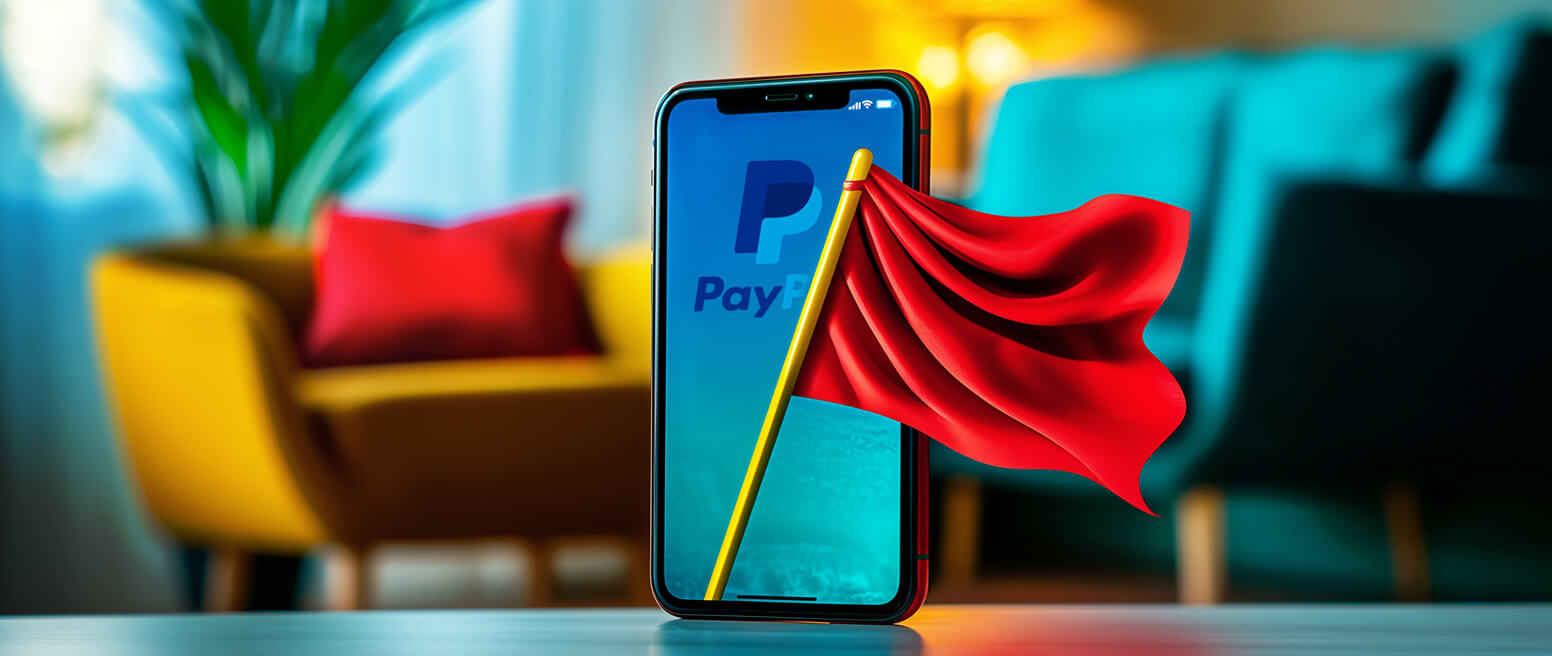PayPal Purchase Protection: How It Works & When to Use It
According to Statista, global eCommerce sales revenue is projected to reach $4.454 trillion in 2024. Revenue is expected to show a compound annual growth rate of 9.47%, resulting in a projected market volume of nearly $7 trillion annually by 2029.
The number of people shopping online is expected to reach 3.2 billion by 2029. That said, many consumers are still a bit hesitant about eCommerce due to lingering concerns about fraud or other risks.
Of course, most online exchanges are legitimate and safe. But, if a consumer is still unconvinced, a “money-back” guarantee might be a deciding factor. That’s one of the motives behind the PayPal Purchase Protection program.
PayPal says the program lets users “shop with confidence.” But does PayPal Purchase Protection live up to the hype?
Recommended reading
- eBay Resolution Center: The Guide for Buyers & Sellers
- PayPal Account Limitations? Here are 5 Ways to Respond.
- PayPal Refund Scams: How They Work & How to Stop Them
- PayPal Chargeback Time Limits: 2025 Rules & Timelines
- PayPal Dispute Fees: How PayPal Chargeback Fees Work
- The Top 12 PayPal Scams to Watch for in 2025
What Is PayPal Purchase Protection?
- PayPal Purchase Protection
PayPal Purchase Protection is a program offered by PayPal that is designed to defend users against fraud. If a user is the victim of abuse, and the transaction in question qualifies for Purchase Protection, that buyer may be covered for the full purchase price, plus the cost of fees like shipping charges.
[noun]/pā • pal • pǝr • CHǝs • prǝ • tek • SHǝn/
If an item bought using PayPal doesn’t arrive, arrives damaged, or significantly differs from its description, the buyer can receive a refund. This is the promise of PayPal Purchase Protection.
This protection boosts consumer confidence. It allows shoppers to buy with confidence from a wide range of sellers, including lesser-known or international ones. This can be done without the fear of losing their money over a fraudulent or unsatisfactory transaction.
The platform also provides a straightforward process for resolving disputes, acting as a mediator between buyer and seller to ensure fair outcomes. It makes online shopping safer and more appealing, encouraging a wider variety of transactions to take place online.
What Does PayPal Purchase Protection Cover?
In short, if you don't receive the item that you ordered, or it shows up significantly different from its description, you may qualify for Purchase Protection. PayPal will then reimburse you for the full purchase price plus any original shipping costs, subject to terms and limitations.
To dispute a charge, you must have an existing PayPal account in good standing. Also, the purchase in question must have been paid for through that account.
Not all transactions qualify for protection, though. Whether PayPal Purchase Protection applies is determined based on the claim you’re making about the transaction.
Currently, there are only two situations in which a purchase may be eligible for PayPal Purchase Protection:
Also, remember that PayPal Purchase Protection does not kick in automatically. If you have a qualifying transaction, you’ll need to make a claim via the PayPal Resolution Center within 180 calendar days of making the payment.
What is Not Covered by PayPal Purchase Protection?
Even if a transaction meets all other eligibility requirements, it may not be covered under PayPal Purchase Protection. There are a number of product categories and purchase types that are excluded, including:
- Real estate
- Motorized vehicles
- Custom-made goods
- Industrial machinery
- Prepaid cards (phone cards, gift cards, etc.)
- Items that violate PayPal policies
- Card-present purchases
- Sending money to friends or family
- Disputes filed beyond the allotted time frame
- Items that were described accurately by the seller
- Items the seller can prove were delivered
- Services the seller can prove were used
- Donations (including crowdfunding)
For a complete current list of non-covered transactions, visit PayPal’s Dispute Page.
How Does PayPal Purchase Protection Work?
Please note that you’re required to contact the seller and attempt to resolve disputes directly before involving PayPal. You can do this through the Resolution Center; simply log in, locate the transaction in question, and choose “Contact Seller.”
If you and the seller can’t reach an agreement, this is when you can escalate the dispute to a claim. This must be done within 20 days of filing your dispute, or PayPal will automatically close the matter.
Once the case has been escalated, you may be asked to provide evidence, which you should do as quickly as requested. You may also be required to return the disputed item to the seller.
The overall process looks something like this:
At this point, you’ve done your part. The rest is up to PayPal. As they put it, the company will determine “...in its sole discretion, whether your claim is eligible for the PayPal Purchase Protection program.” In other words, PayPal will make a judgment call. This may — or may not — turn out in your favor. Even if you think you have an iron-clad case, PayPal may see it differently.
Can Merchants Respond to PayPal Purchase Protection Claims?
As we mentioned, there are only two scenarios where Purchase Protection for buyers comes into play.
If the merchandise you purchased was never delivered, PayPal will typically go to the seller for proof of delivery. If the seller can produce compelling evidence, such as a signature on delivery, you’re probably out of luck.
“Not as Described” cases can be a little trickier. You’re either saying what you received was defective, damaged, or a counterfeit or that you didn’t get everything you ordered. This can also apply to certain intangible items, such as a digital file that you are unable to download.
In these situations, PayPal may ask you to prove your case. For example, a claim for a damaged item might need pictures of the original damaged package. A counterfeit item case may require documentation from a credentialed professional certifying the item is fake. Depending on the cost of the original item, some cases may not be worth the time and trouble of disputing.
What if My Claim is Not Covered by PayPal Purchase Protection?
Well, you have a couple of options.
First, if PayPal decides in the seller’s favor, you may be able to appeal the decision by submitting new or additional evidence. Whether or not you can do this is up to PayPal. And, even if they accept additional evidence, they could still reject your appeal after looking it over.
If that doesn’t work, you can consider filing a chargeback. All major card networks offer consumers a chargeback option. This allows cardholders to dispute charges they feel are invalid or unfair. For the most part, chargebacks can be filed for any of the reasons PayPal allows, plus a few more.
The steps for filing a credit card chargeback are much the same as filing a claim with PayPal. You’ll need to try resolving the issue directly before filing. You must provide evidence, and you’ll be under similar time constraints. And, like a PayPal dispute, your money is refunded if you win.
Why PayPal Purchase Protection is a Better Option
So why not go with a chargeback in the first place? Well, there are a few reasons. First, a chargeback should always be considered a last resort. You should only go this route after every other avenue has been tried. That’s what the chargeback system was designed for.
On a more practical level, PayPal disputes are less complex. You can access everything–even the seller–right through your PayPal account. Bank chargebacks, on the other hand, tend to be more involved. They require more and deeper communications with the seller and the issuing bank.
A chargeback will also take longer than a dispute. If the bank doesn’t reject your claim in a timely manner, you may miss the deadline to try again by filing a PayPal dispute.
In contrast, let’s say you start with a PayPal dispute, but it gets denied. In most cases, you’ll still have time to file a bank chargeback. In fact, PayPal terms openly state that if they reject your claim, you can file a dispute with your card issuer later.
Of course, there’s still a chance PayPal will take too long to deny your claim. If that happens, and you’re unable to meet the bank’s chargeback time limits because PayPal took too long, they will reimburse you outright:
“...if, because of our delay, you recover less than the full amount you would have been entitled to recover from the card issuer, we will reimburse you for the remainder of your loss (minus any amount you have already recovered from the seller or your card issuer).”
PayPal Purchase Protection guidelines
The bottom line is that if your transaction is eligible for PayPal Purchase Protection, you’re almost always better off starting there. You can always talk to the bank later. Don’t try to do both simultaneously, as that is likely to get both claims canceled.
FAQs
How does PayPal Purchase Protection work?
PayPal Purchase Protection allows buyers to request a refund if an item they purchase online using PayPal does not arrive, is damaged, or is significantly different from its description. The program facilitates dispute resolution between buyers and sellers, offering a layer of security for online transactions. To get started, consumers must first try to resolve the issue with the merchant, then file a dispute, and if the dispute does not resolve the issue, the consumer may escalate the dispute to a claim.
Will PayPal protect me if I get scammed?
Yes, PayPal's Purchase Protection program may cover you if you're scammed by providing a refund for transactions that fall within their coverage criteria, such as non-delivery or receiving an item that's significantly not as described. However, it's important to report the issue within the specified time frame and follow PayPal's process for claims.
Can you get money back from PayPal if you get scammed?
Yes. If you get scammed, PayPal allows you to request a refund through its Purchase Protection program for eligible transactions, which include cases where the item doesn't arrive or isn't as described. You must file a dispute within 180 days of your purchase and follow the necessary steps to escalate it to a claim for PayPal to review and decide on a refund.
What are the exclusions for PayPal buyer protection?
PayPal Purchase Protection does not cover all transactions, excluding items like real estate, vehicles, custom-made goods, and transactions made in person, among others. Additionally, claims must be filed within a specific timeframe, and issues related to the quality of the item received are generally not covered.
Is PayPal Purchase Protection worth it?
Yes. PayPal Purchase Protection adds a valuable layer of security for buyers, making online purchases safer by offering a recourse for disputes and potential refunds. It enhances buyer confidence in transactions, especially with unfamiliar sellers or when buying high-value items.
How do I claim buyer protection on PayPal?
To claim PayPal Purchase Protection, first initiate a dispute through your PayPal account's Resolution Center within 180 days of the transaction, then escalate it to a claim if the issue isn't resolved directly with the seller. Follow the prompts to provide necessary information and evidence regarding the transaction.















